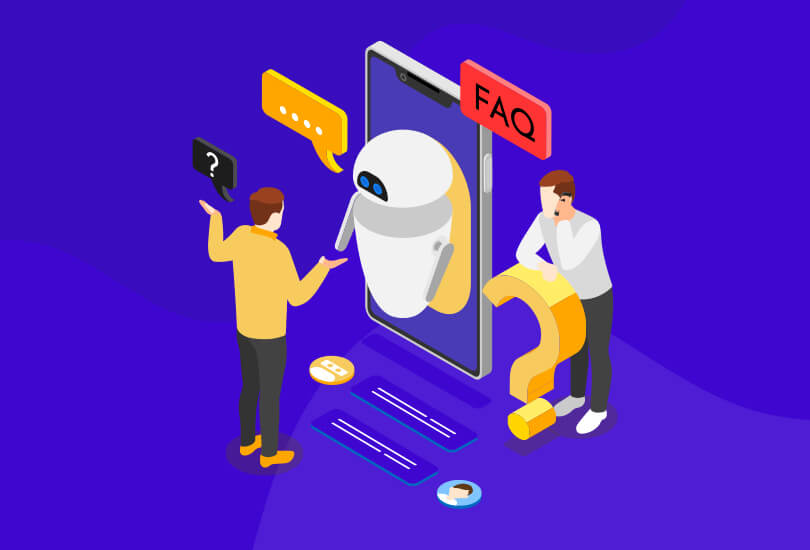A few years ago, a famous chatbot named Tay was launched by a major tech company – and within 24 hours, it went from friendly to offensive because it blindly mimicked user behavior. That disaster is a warning: automation is powerful, but it can misstep fast. In the world of live support chat, businesses now must tread carefully.
This blog explores how to manage AI compliance for business live support chat in a way that’s both effective and responsible. You’ll learn what rules matter, where companies often slip, and how using a platform built with compliance in mind helps you stay ahead – without slowing your team down.
A Field Guide to Safe Automation
The world of AI automation is full of promise, but it also comes with rules that can’t be ignored. Laws like the GDPR in Europe, CCPA in California, and the new EU AI Act all share one thing in common – they demand honesty and control.
Customers have the right to know when they’re chatting with a bot, to access or delete their data, and to trust that their information isn’t stored forever. Yet many businesses slip up by blurring the line between human and machine or by keeping data longer than they should.
Good compliance doesn’t have to be complicated. It starts with transparency – let the bot introduce itself, keep logs of every exchange, and delete old chat records when they’re no longer needed. Build in human oversight for tricky cases and run regular bias checks. Think of compliance as a seatbelt, not a speed limiter – it keeps your automation safe without slowing your growth.
Strategies to Incorporate Live Chat with AI & Compliance
Here are key strategies businesses should follow, especially when integrating AI-powered live chat like in WhatsApp or web:
Strategy 1: Start with clear fields & minimal data collection – Don’t ask for every detail immediately – collect gradually. Only when needed.
Strategy 2: Always label and disclose automation upfront – The first message should say “I am an AI assistant.” This transparency builds trust.
Strategy 3: Define human escalation paths – When a question is sensitive or ambiguous, pass it to a real person.
Strategy 4: Log, audit & review chatbot decisions – Periodically review errors, biases, and unusual flows.
Strategy 5: Enforce data retention policies – Auto-delete or archive chat data to avoid liability and respect user rights.
These are not just theory. Companies using AI in support have seen reply times cut by 60%, but those who ignored compliance saw brand backlash and fines. Doing it right means scaling and staying safe.
How Chat Platforms Uphold Compliance
Your chat infrastructure must act like a scaffold – invisible yet enabling strong compliance. Tools should map directly to strategies:
- Chatbot / Automation Engine: It must support tags indicating “AI response,” route unknown queries to humans, and log decision paths.
- Helpdesk / Ticketing: Maintain threads of human interventions and enable user deletion or export requests.
- KnowledgeBase & UI Widgets: Pre-chat forms should include consent checkboxes and brief data use policies.
- Analytics & Monitoring: Dashboards tracking error rates, bias flags, “escalations per volume” help you course-correct.
- Multi-Agent / Scalability: Unlimited agents allow you to scale human oversight as automation grows.
When your live chat solution is built with compliance in mind, it becomes a partner in your responsibility – not a risky accessory.
Why AI Compliance Matters in Live Chat?
Do you remember the last time you used a live chat? – Most probably you shared just your name, email, and a short note about your problem. Apparently, it might seem very casual, but those few details come under personal data. Once a bot accesses that information, it falls under global privacy laws like GDPR, CCPA, and the EU AI Act.
These rules all revolves around one simple idea: be honest and take responsibility. When automation claims to be human or gives unfair answers, it impacts more than compliance – it breaks trust. We’ve seen what happens when privacy protocols fail; companies like British Airways and Marriott paid dearly for it.
The smartest AI systems know their limits, stay transparent, and let humans step in when needed.
From Chaos to Compliance: Lessons from Real Missteps
In 2018, a major airline was fined nearly €200 million for exposing thousands of customers’ data. That kind of slip happens when automation isn’t properly managed. Meanwhile, IBM Watson learned early that pairing AI with human oversight increased both accuracy and compliance by over 30%.
Another turning point: Salesforce, early in adopting AI, introduced ethical AI guidelines, which became a competitive advantage. Customers began trusting their platform more because they publicly committed to fairness.
These stories teach a simple lesson: ignoring compliance always costs more than building for it. Businesses that treat ethical AI as part of their core promise avoid chaos and build long-term trust.
Customer-Centric Insights
Compliance isn’t a barrier to empathy – it is empathy in action. When you tell someone, they’re speaking with AI, you show respect. When you give them control over their data, you build authority.
Recent research shows 76% of customers say trust in data handling impacts their brand loyalty (Statista 2024). When bots are clearly labeled, and user data is treated transparently, companies report fewer complaints, higher satisfaction, and stronger retention.
One surprising insight: in multiregional deployments, customers prefer region-based bots with local language and data storage. Regional compliance + personalization = higher engagement.
Practical Takeaways
Here’s how to build compliance into your live chat, one smart step at a time:
- Start with one chat flow and keep it simple.
- Add clear bot disclosure and a human fallback.
- Test with a small user group first.
- Log every chat and review monthly.
- Give users control – delete, download, or opt out.
Small steps now make scaling safer later.
FAQs
Yes – over 60% of businesses use some form of AI in chat support to reduce wait times and improve scale.
Yes – with API-based integrations, you can route messages to bots, while maintaining compliance and human handoffs.
AI chat support uses automated agents to answer recurring queries, escalating to humans when needed.
Use AI for repetitive tasks, monitor performance, stay transparent, and combine human oversight to maintain trust.
The “30% rule” suggests humans handle the top 30% most complex or sensitive cases, letting AI manage the routine majority.
Conclusion
When bots cross the line, the fallout isn’t just legal – it’s relational. That’s why compliance can’t be an afterthought; it must be baked into your live chat strategy from day one. The companies that thrive in this AI-driven era are those who automate with integrity.
You don’t have to choose between speed and ethics. With clear disclosure, human backup, data rights, and smart design, you can run a live support system that’s fast, scalable – and trustworthy. Start small, iterate carefully, and let compliance be the guardrails that let your chat grow up strong.








